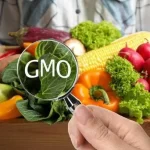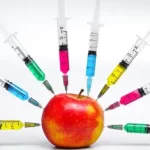Steering Clear of Frankenbananas: How to Keep Your Diet GMO-Free
In a world where healthy choices are a priority for many, bananas have long held a cherished place in our diets. Their natural sweetness, fiber-rich content, and a bevy of essential nutrients make them a go-to snack for millions. However, a recent revelation has sent shockwaves through the world of fruit lovers: genetically modified organisms (GMOs) might be creeping into the banana aisle. In this article, we’ll explore the emergence of gene-edited “Frankenbananas” and reveal how you can ensure your diet remains free from this genetic twist.
As we peel back the layers of this story, you’ll not only uncover the implications of GMO bananas and why they’re causing concern but also gain insight into the bigger picture of GMOs in the food industry. We’ll provide you with practical steps to keep your banana consumption as pure as nature intended, empowering you to make informed choices in your pursuit of a healthy and natural lifestyle. Join us on this intriguing journey into the world of GMOs, where knowledge becomes your shield against the unexpected
The Arrival of GMO Bananas
In recent years, the prospect of genetically modified bananas making their way onto supermarket shelves has become a concerning reality. These “Frankenbananas” are not the product of nature’s evolutionary process but are instead the result of genetic tinkering in a laboratory setting. To fully understand the issue at hand, let’s take a closer look. These genetically modified bananas were created by a United Kingdom-based biotech company called Tropic. The primary goal, similar to GMO apples, is to prevent them from turning brown, making them more appealing to consumers. However, this seemingly innocuous enhancement has ignited a fierce debate.
Advocates for natural, unmodified foods argue that GMO products lack proper labeling, leaving consumers unaware of what they’re eating. Furthermore, concerns arise from the lack of long-term safety testing on genetically engineered foods, with correlations between the introduction of GMOs in the 1990s and rising health problems. Adding to the complexity, the Philippines, the world’s second-largest banana exporter, has granted these bananas a “non-genetically modified organism exemption.” This raises the possibility of unlabeled GMO bananas reaching the United States, creating uncertainty for consumers who value natural and wholesome food choices.
As, we’ve shed light on the emergence of GMO bananas and why they’ve sparked a heated debate among consumers, natural food enthusiasts, and biotech companies. Stay with us as we delve deeper into the implications of these genetically modified fruits and how you can navigate the grocery store aisles to avoid them. Please let me know if this meets your requirements or if you have any further instructions.
The Unseen Dangers of GMO Bananas
In the quest to keep bananas looking fresh and appealing, the genetic modification process introduces several hidden risks that are worth considering. These unseen dangers include:
Lack of Transparency: One of the major concerns surrounding GMO bananas is the absence of transparency. Unlike organic or non-GMO foods, these genetically modified fruits often go unlabeled. This lack of information can catch consumers off guard, potentially compromising their commitment to natural and healthy eating.
Long-Term Health Effects: GMO foods, including bananas, have not undergone extensive long-term safety testing. This absence of comprehensive research raises questions about the potential health effects of consuming genetically modified fruits over time. As GMOs continue to infiltrate our food supply, concerns about their impact on human health persist.
Environmental Consequences: The genetic modification of crops can have unintended consequences on the environment. It may lead to reduced biodiversity, increased pesticide use, and the development of superweeds and pests resistant to common treatments. Understanding these environmental repercussions is crucial as we strive to make responsible choices for our planet.
Ethical Concerns: Beyond health and environmental considerations, GMOs also raise ethical questions. Should we tamper with the genetic makeup of our food, potentially altering it in ways that nature never intended? The ethical implications of GMOs extend to issues of corporate control over seeds and the broader food system.
As, we’ve highlighted the hidden dangers associated with GMO bananas. Understanding these risks is essential for anyone who values transparency in food labeling, is concerned about potential long-term health effects, and cares about the broader environmental and ethical consequences of genetic modification. Stay tuned as we explore how you can avoid GMO bananas and make informed choices in the grocery store. Please let me know if this meets your requirements or if you have any further instructions.
Making Informed Choices
Now that we’re aware of the potential risks associated with GMO bananas, let’s explore how you can make informed choices when it comes to your fruit selection.
Seek Out Organic Options: One of the most reliable ways to avoid GMO bananas is to opt for organic varieties. Organic bananas are grown without the use of synthetic pesticides or genetically modified organisms. Look for the USDA organic label when shopping to ensure your bananas are as natural as they come.
Familiarize Yourself with the PLU Code: When buying bananas, pay attention to the PLU (Price Look-Up) code on the fruit’s sticker. Conventionally grown bananas typically have a four-digit code, while organic bananas have a five-digit code beginning with the number 9. By checking the PLU code, you can easily distinguish between organic and non-organic options.
Support Non-GMO Verified Brands: Some brands are committed to providing non-GMO products, including bananas. Look for bananas from companies that are Non-GMO Project Verified. This third-party verification ensures that the product meets rigorous GMO avoidance standards.
Shop at Local Farmers’ Markets: Another way to enjoy GMO-free bananas is by purchasing them at local farmers’ markets. Many small-scale farmers prioritize natural and sustainable practices, making it more likely that the bananas they offer are free from genetic modification.
By following these steps, you can navigate the grocery store with confidence, knowing that you’re making choices aligned with your values of natural and wholesome eating. As we continue our journey, we’ll uncover more tips and insights to help you maintain a GMO-free lifestyle.
Exploring Diverse Banana Varieties
Bananas come in a delightful array of shapes, sizes, and flavors beyond the common yellow Cavendish banana. By exploring diverse banana varieties, you can not only appreciate the natural essence of this beloved fruit but also enrich your diet with unique tastes and nutrients.
Red Bananas: Red bananas have a vibrant, reddish-purple skin and a sweet, creamy texture. They’re slightly more tart than the yellow variety, making them a fantastic addition to smoothies or enjoyed as a stand-alone snack. Red bananas are rich in vitamin C and provide a unique twist to your banana experience.
Plantains: Plantains are a starchy banana variety that is often cooked before consumption. They are a staple in many tropical cuisines and can be fried, boiled, or mashed. Plantains are an excellent source of complex carbohydrates and dietary fiber, offering a different texture and flavor profile compared to dessert bananas.
Finger Bananas: As the name suggests, finger bananas are small and slender, resembling the size and shape of your fingers. They have a sweet and tangy taste, making them a delightful choice for snacking. Finger bananas are packed with essential nutrients like potassium, vitamin B6, and vitamin C.
Burro Bananas: Burro bananas are shorter and thicker than the common yellow banana. They have a distinctive lemony flavor with hints of sweetness. These bananas are an excellent source of dietary fiber, vitamin C, and vitamin B6. They can be enjoyed fresh or used in baking.
Exploring these diverse banana varieties not only introduces exciting flavors into your diet but also allows you to savor the natural essence of each type. Whether you’re seeking a unique taste or specific nutritional benefits, these banana variations offer a delightful journey through the world of natural fruit diversity.
Staying GMO-Free in Your Diet
Now that you’ve learned about the potential risks of GMO bananas and how to embrace the natural essence of this fruit, let’s discuss how to stay GMO-free in your overall diet.
When grocery shopping, make it a habit to read product labels carefully. Look for non-GMO certifications and USDA organic labels to ensure you’re choosing GMO-free products. By favoring whole foods over processed ones, such as fresh fruits, vegetables, grains, and legumes, you can be confident in selecting ingredients that are typically GMO-free. Cooking from scratch gives you greater control over your ingredients, allowing you to maintain a wholesome and natural diet.
Exploring local farmers’ markets is another excellent way to stay GMO-free. Supporting growers who prioritize natural and sustainable farming practices not only provides you with fresh produce but also encourages a food system that aligns with your values. Stay informed about GMO-related developments and regulations to be aware of potential changes in the food industry. Consider joining or supporting organizations advocating for transparent GMO labeling laws, contributing to the effort to ensure consumers have the right to know what’s in their food.
By incorporating these practices into your daily life, you can maintain a GMO-free diet that aligns with your values of natural and wholesome eating. These simple yet impactful choices will help you navigate the complex world of modern food production while staying true to your commitment to healthy living..
Nurturing a GMO-Free Future
As we’ve journeyed through the nuances of GMOs and their impact on our diets, it’s crucial to consider the role we play in shaping a GMO-free future. Your choices today can influence the availability and accessibility of natural, wholesome foods for generations to come.
Advocacy and education are powerful tools in nurturing a GMO-free future. By actively advocating for transparent GMO labeling and supporting educational initiatives, you can encourage conversations within your community and among your peers about the importance of knowing what’s in our food. Raising awareness and sharing knowledge inspires others to make informed choices, creating a ripple effect that promotes GMO transparency. Supporting sustainable agriculture is another way to contribute to a GMO-free future. By favoring local growers and farmers who prioritize natural and eco-friendly methods, you help build a food system that respects the principles of nature. This support encourages the cultivation of GMO-free produce and contributes to a healthier planet.
Engaging with legislation and staying informed about proposed bills and regulations in your region allows you to actively participate in discussions and advocacy efforts. Your involvement can help ensure that GMO transparency becomes a legal standard. Additionally, holding food companies accountable for their practices by supporting brands that prioritize GMO transparency and non-GMO options can influence industry practices towards more natural and wholesome products. Your commitment to a GMO-free lifestyle extends beyond your own plate. It’s a testament to your dedication to healthier living and a more sustainable food system. By actively nurturing a GMO-free future through advocacy, support for sustainable agriculture, engagement with legislation, and holding the food industry accountable, you contribute to a world where natural and wholesome eating is accessible to all. Your actions today shape the future of food for tomorrow.
The post Steering Clear of Frankenbananas: How to Keep Your Diet GMO-Free appeared first on Healthy Holistic Living.












